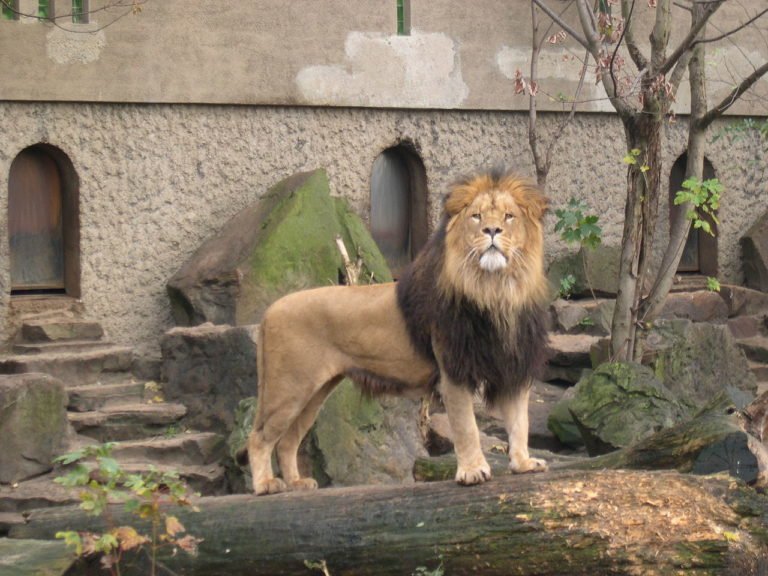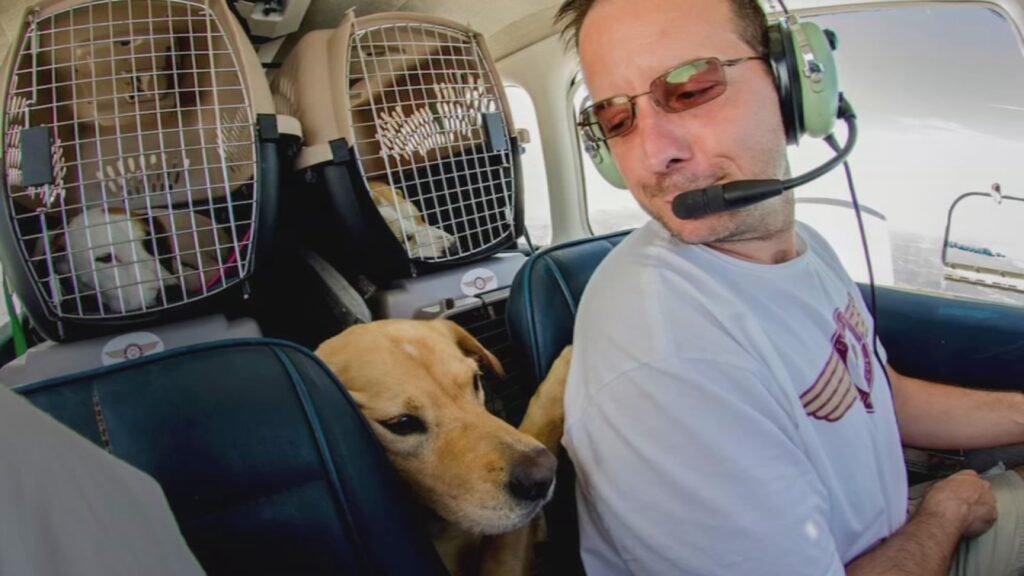The Hidden Realities of Zoos: A Call for Change. Zoos are often seen as places of wonder, where people can observe exotic animals up close. However, behind the scenes, these facilities are centers of captivity and entertainment where wild animals are often exhibited in solitary confinement, primarily to satisfy human curiosity.
Life in Captivity. Animals in zoos live under the complete control of humans, far removed from their natural habitats. This suppression of natural instincts leads to permanent frustration, as these creatures are denied the freedom to behave as they would in the wild. This environment often results in genetic, physical, and behavioral degeneration.
Consequences of Captivity & Stereotypical Behaviors:
- Obsessive and repetitive actions: Animals display behaviors such as pacing, circling, playing with their tongues, and biting or licking bars. These behaviors are common in big cats, elephants, bears, giraffes, camels, and primates.
Other Pathologies:
- Apathy and boredom: Animals often exhibit signs of sadness and lack of interest in their surroundings.
- Eating disorders: Some animals either refuse to eat or become obsessed with food.
- Self-mutilation: Acts like biting tails or legs and banging heads are common in cats, bears, and primates.
- Excessive grooming: Bears and parrots may pull out their hair or feathers, leaving patches of bare skin.
- Abnormal sexual behaviors: Animals may show hyperactivity or use substitute objects.
- Abnormal maternal behavior: Mothers might attack, kill, or abandon their young.
- Prolonged childish behavior: This includes immaturity, abnormal social behavior, and lack of social trust.
- Abnormal aggression: Increased intensity or frequency of aggression due to overcrowded cages, dominance threats, and stress from visitors.
- Vomiting and regurgitation: Common in gorillas and chimpanzees, leading to repeated vomiting and eating of vomit.
- Coprophagy: Animals, especially gorillas and chimpanzees, may play with or eat their feces, and smear it on walls.
- Various diseases: Digestive, skin, respiratory, and cardiovascular illnesses are prevalent.
Causes of Abnormal Behavior and Illness. These issues stem from the inability of animals to develop and express natural behaviors, idleness, boredom, stress, human control, loss of normal social interactions, medical management, artificial habitats, predictable diets, and unnatural proximity to other animals and humans.
Conservation and Education Concerns. An estimated 6,000,000 animals live in captivity for human entertainment, yet less than 10% of these are endangered species. Zoos have not significantly contributed to conservation or reintroduction programs. True conservation success relies on long-term efforts and releasing large numbers of animals back into the wild. Captive-bred animals often struggle to survive due to behaviors acquired in captivity.
Zoos and Education. Zoos perpetuate the notion that animals are objects for human entertainment. This contradicts the goal of education, as it shows animals subjected to captivity and unnatural conditions. Zoos fail to raise genuine awareness about ecosystem preservation and often mislead the public through circus-like shows.
Zoos have not made substantial contributions to the conservation of endangered species or their natural habitats. Captive breeding is not a relevant strategy for wildlife conservation. Zoos fail to educate the public on species protection, perpetuating a negative image of animal use for entertainment. Many animals live in unacceptable conditions, with little priority given to their well-being.
Recommendations for Improvement
- Move animals to appropriate environments: Prioritize species suffering most in captivity, such as elephants and big cats, to minimize negative effects.
- End the use of animals in circus shows: Stop forcing animals into unnatural behaviors for entertainment.
- Strict monitoring and compliance: Authorities should ensure adherence to legislation for improving animal welfare and public safety.
- Responsible relocation: When zoos close, ensure animals are moved to suitable new facilities.
- Focus on habitat conservation: Invest in the protection and conservation of natural habitats instead of captive breeding.
- In-situ breeding programs: For species where captive breeding is essential, establish programs within their natural habitats.
What You Can Do
- Visit as a critical observer: Analyze the conditions of the animals and seek more information.
- Become a zoo investigator: Collaborate with organizations like ADDA to gather information and advocate for change.
ADDA, a founding member of ENDCAP, has conducted several campaigns to raise awareness and end unjustified captivity. Through complaints, zoo visits, reports, conferences, workshops, investigations, legislative amendments, and international partnerships, ADDA strives to improve the welfare of captive animals.
For more information and to get involved, visit ENDCAP.
Let’s work together to bring relief to captive animals and push for their well-being and conservation in their natural habitats.
Animal Captivity: A Dangerous Distraction from Real Conservation Efforts. Not a day goes by without one of the world’s approximately 10,000 zoos announcing the birth of a captive-born animal. From elephants to rhinos, these birth announcements are often accompanied by claims that these new arrivals are helping to secure the future of their species. However, this narrative masks the uncomfortable truth about wild animal captivity and distracts from genuine conservation efforts.
The Illusion of Conservation. In February 2023, a rhino was born at a zoo in Kansas, with the zoo owner claiming that the birth helps in “preserving species on the brink of extinction.” Similarly, the birth of twin elephants in Syracuse, New York, in November 2022 was hailed as boosting the endangered species’ population. The same claims followed the birth of Amur leopard cubs at St. Louis Zoo in May 2022 and a giraffe calf at the Virginia Zoo in October 2022.
Zoos have long promoted the idea that breeding wild animals in captivity ensures the survival of the species. The Association of Zoos and Aquariums (AZA) even coordinates breeding programs under the banner of Species Survival Plans (SSP), aimed at maintaining genetically diverse, self-sustaining populations of more than 500 species.
The Reality of Captivity. Despite claims that conservation is a priority, animals in zoos rarely have the opportunity to be released back into the wild. Zoos serve more as silos for species, holding them captive while wild populations continue to struggle. Rather than mitigating species decline, zoos contribute to it and distract from the real threats facing wild animals.
Elephants in Captivity. Elephants exemplify the conservation and welfare issues associated with zoos. Research by Born Free USA revealed that elephants have been captured from the wild to stock zoo exhibits as recently as 2016. Zoos in North America need to import elephants to maintain their captive populations because deaths outnumber births. This makes zoos net consumers of elephants rather than their guardians.
Captive elephants suffer poor welfare, unable to meet their complex needs in captivity. Captive elephant calves are more likely to die from Elephant Endotheliotropic Herpesvirus Haemorrhagic Disease (EEHV-HD) than their wild counterparts. This disease is the leading cause of death for infant elephants in zoos.
One tragic example is Chai, an elephant at Oklahoma City Zoo, who was forcibly inseminated 112 times and eventually died. Her calf, Hansa, died from EEHV-HD at just seven years old. This story highlights the extreme measures zoos take to breed elephants and the dire consequences for the animals involved.
Giraffes in Captivity. Giraffes, the world’s tallest land mammals, also suffer in zoos. Their natural range is vast, but the average zoo enclosure in the U.S. is just 1.2 acres. Giraffes need large areas to roam and forage, and captivity leads to physical and mental health issues. Many giraffes die from entanglements or accidents in their enclosures. Stereotypic behaviors like bar biting and pacing are common, with nearly 80% of giraffes in AZA zoos displaying these signs of distress.
Polar Bears in Captivity. Polar bears are another extreme example of the inadequacies of zoo captivity. Their natural range is tens of thousands of square miles, yet a typical zoo enclosure is only 0.23 acres. The tiny enclosures cannot meet their need for space and swimming. Moreover, keeping polar bears in captivity negatively impacts climate change, as zoo infrastructure contributes significantly to carbon emissions.
The Truth About Zoo Conservation. Despite their claims, zoos primarily exist for entertainment. Animals born in zoos will almost always die in zoos, never experiencing the wild. This captivity distracts from the real conservation efforts needed to protect animals in their natural habitats.
What True Conservation Looks Like. True conservation efforts focus on protecting animals in their natural environments. This involves addressing complex issues such as habitat loss, poaching, and climate change. Conservation should aim to preserve ecosystems and natural behaviors, rather than keeping animals in artificial settings for human amusement.
Zoos claim to serve conservation and education, but their primary purpose is entertainment. It is time to recognize that lifelong captivity is harmful to animals and distracts from genuine conservation efforts. We should focus on protecting animals in the wild and addressing the real threats they face.
The Hidden Cost of Animal Captivity. Every year, millions of exotic animals are captured from the wild or bred in captivity for commercial profit or human amusement. These animals languish in conditions that fail to meet their instinctive behavioral and physical needs. Whether held in roadside zoos, circuses, aquariums, kept as “pets,” or used in interactive displays like photo ops and rides, the reality of their captivity is grim and often harmful.
The Plight of Captive Primates. “Non-human primates – monkeys, apes, and prosimians – are intelligent, emotionally complex beings who simply cannot thrive when kept as pets in people’s homes. It is high time that the cruel and unethical trade in primates as pets is brought to an end, once and for all,” says Dr. Liz Tyson, Director of Born Free USA’s Primate Sanctuary. These primates, with their advanced cognitive abilities and rich emotional lives, suffer immensely when deprived of the complex social structures and environments they need to thrive.
The Broader Impact of Animal Exploitation. “The exploitation of wild animals for human gain – whether that be keeping them as pets, exhibiting them in zoos, forcing them to perform in circuses, or experimenting on them in labs – causes damage to those individuals that they will carry with them for the rest of their lives. Every wild animal deserves to be able to live a life in freedom, with their own kind, and on their own terms,” continues Dr. Tyson.
The Problems with Captivity. Captive animals are unable to perform their natural behaviors, which leads to a host of physical and psychological problems. In many cases, this results in abnormal behaviors, such as pacing, self-mutilation, and aggression. The frustration and deprivation these animals experience often lead to dangerous situations for both the animals and the humans around them.
Case in Point: Exotic Animal Incidents. Wild animals belong in the wild — not in the confinement of circuses, zoos, aquariums, backyards, or homes. When kept in captivity, wild animals are not able to perform their natural behaviors and many lash out in frustration. This situation is dangerous for animals and humans alike. Born Free USA’s interactive Exotic Animal Incidents Database documents numerous attacks on humans, other animals, and escapes by exotic animals in the U.S., highlighting the inherent risks and tragedies of keeping wild animals in captivity.
The Way Forward. To truly address these issues, it is imperative that we focus on genuine conservation efforts that protect animals in their natural habitats rather than perpetuating the cycle of captivity. This means supporting sanctuaries and conservation programs that prioritize the well-being of animals and their natural environments. Public education and policy changes are also crucial in shifting the perception and treatment of wild animals, ensuring they are protected and respected rather than exploited.
What You Can Do
- Be an Advocate: Educate others about the realities of animal captivity and the importance of protecting animals in the wild.
- Support Sanctuaries: Donate to and volunteer with organizations that provide safe havens for rescued wild animals.
- Avoid Exploitative Attractions: Boycott zoos, circuses, and attractions that exploit animals for entertainment.
- Promote Policy Change: Advocate for laws that protect wild animals and prohibit their capture and exploitation.
Every wild animal deserves to live a life in freedom, in their natural habitat, with their own kind. It’s time to end the practice of keeping wild animals in captivity for human amusement and instead focus on true conservation efforts that respect and protect these incredible beings.

The Ethical Dilemma of Zoos and Aquariums. Thousands of animals are confined to zoos and aquariums in the United States and around the world. Although many of these facilities attempt to replicate the animals’ natural habitats, Born Free USA believes that even the “best” captive conditions pale in comparison to life in the wild. The confinement of these animals, regardless of the effort to simulate their natural environment, raises significant ethical and welfare concerns.
Inadequate Care and Facilities. Facilities, particularly roadside zoos, house animals in small, cramped cages completely divorced from the environmental and social conditions found in the wild. Larger, accredited facilities such as those overseen by the Association of Zoos and Aquariums (AZA) often attempt to replicate natural habitats in relatively large, open-air enclosures. These enclosures may include natural elements like grass and dirt and offer opportunities for socialization and enrichment. Despite these efforts, even the “best” zoo settings can never recreate the complex environments that most species encounter in the wild or simulate all the stimuli that keep the animals active and alert.
In addition, no such setting can account for the family structure that exists in the wild. Like zoos, conditions in aquariums also fall short of providing the richness, variety, and space of a life in the wild. Cetaceans – whales and dolphins – who are almost always in motion in the wild, spend only 20 percent or less of their time at the water’s surface. Captive facilities cannot compare to the vast natural environment of wild cetaceans, and even the largest facilities are just a fraction of the size of the animals’ natural home range.
The 2013 documentary Blackfish revealed the devastating impact of captivity and exploitation on whales and dolphins. When denied adequate space, animals in zoos and aquariums often develop problems such as abnormal repetitive behavior, aggression, and reduced life expectancy. Moreover, as animals in these facilities age and are no longer in prime “display” condition, the owners must make decisions about their fate, which often ends tragically.
Little to No Conservation Benefit. One of the most frequently cited arguments in favor of accredited zoos and aquariums is that they benefit wildlife conservation efforts by ensuring a secure, captive animal population that could be used to return a species to the wild if it ever becomes extinct. A few celebrated captive breeding and release projects are regularly cited to demonstrate the success of this kind of intervention, such as the Arabian oryx and the black-footed ferret of the plains of North America. However, closer inspection reveals that the effectiveness of these and many other captive breeding programs is limited and often end up simply providing new animals for the zoo and aquarium industry.
In fact, animals kept in captivity are often not returned to the wild. Relying on captive breeding can draw vital attention and resources away from protecting wild animals and habitats. In aquariums, captive whales and dolphins suffer from high mortality rates, low breeding success, and often endure physical and psychological disorders. Cetaceans are frequently captured from the wild and sold into captivity, and methods of capture and subsequent transport can be extremely cruel, with some animals dying of shock or injury in the process.
Dangerous for People and Animals. Whenever humans are put into close contact with wild animals, there is always an element of danger for both the humans and the animals. Zoos invite people to come into very close and potentially dangerous proximity to wild animals with the promise that, due to the construction of animal enclosures and the presence of barriers, the visiting public will remain safe and apart from the animals. Yet, the news abounds with stories of animals responding to the unnatural conditions at zoos, whether by escaping the confines of their enclosures or injuring a human, at times resulting in animals being killed, such as the well-known case of Harambe the gorilla, who was killed after a child entered his zoo enclosure.
Likewise, many aquariums feature shows in which a handler or trainer enters the water with the animal, such as an orca or dolphin, to ride or otherwise interact with the animal. These tricks and behaviors are unnatural, contrary to the animals’ instinctive behaviors, and can create stress and frustration, often causing the animals to react. Numerous handlers have been seriously injured or killed when interacting in this manner with captive animals, like Tilikum the orca, who killed three people: two handlers and one man who gained unauthorized access to the tank.
The Path Forward. The ethical and practical challenges of keeping wild animals in captivity suggest that it is time to reevaluate and shift our approach to wildlife conservation. Instead of supporting zoos and aquariums, which perpetuate the cycle of captivity, true conservation efforts should focus on protecting animals in their natural habitats and addressing the complex issues facing free-living animals.
How You Can Help
- Donate to Conservation Efforts: Support organizations like Born Free USA that focus on protecting wild animals in their natural environments.
- Raise Awareness: Educate others about the ethical and welfare concerns of animal captivity.
- Boycott Exploitative Facilities: Avoid visiting zoos, aquariums, and attractions that exploit animals for entertainment.
- Advocate for Policy Change: Push for laws that protect wild animals and prohibit their capture and exploitation.
Protect wild animals from captivity and other exploitation by helping Born Free USA! HELP NOW
Every wild animal deserves to live a life of freedom, in their natural habitat, with their own kind. It is time to end the practice of keeping wild animals in captivity for human amusement and focus on true conservation efforts that respect and protect these incredible beings.



